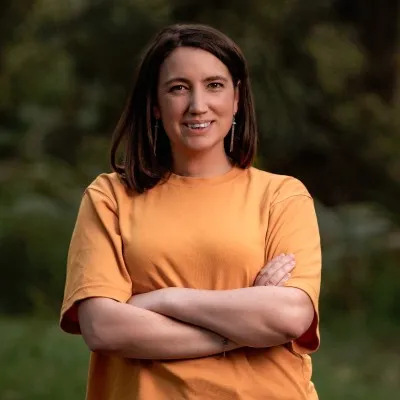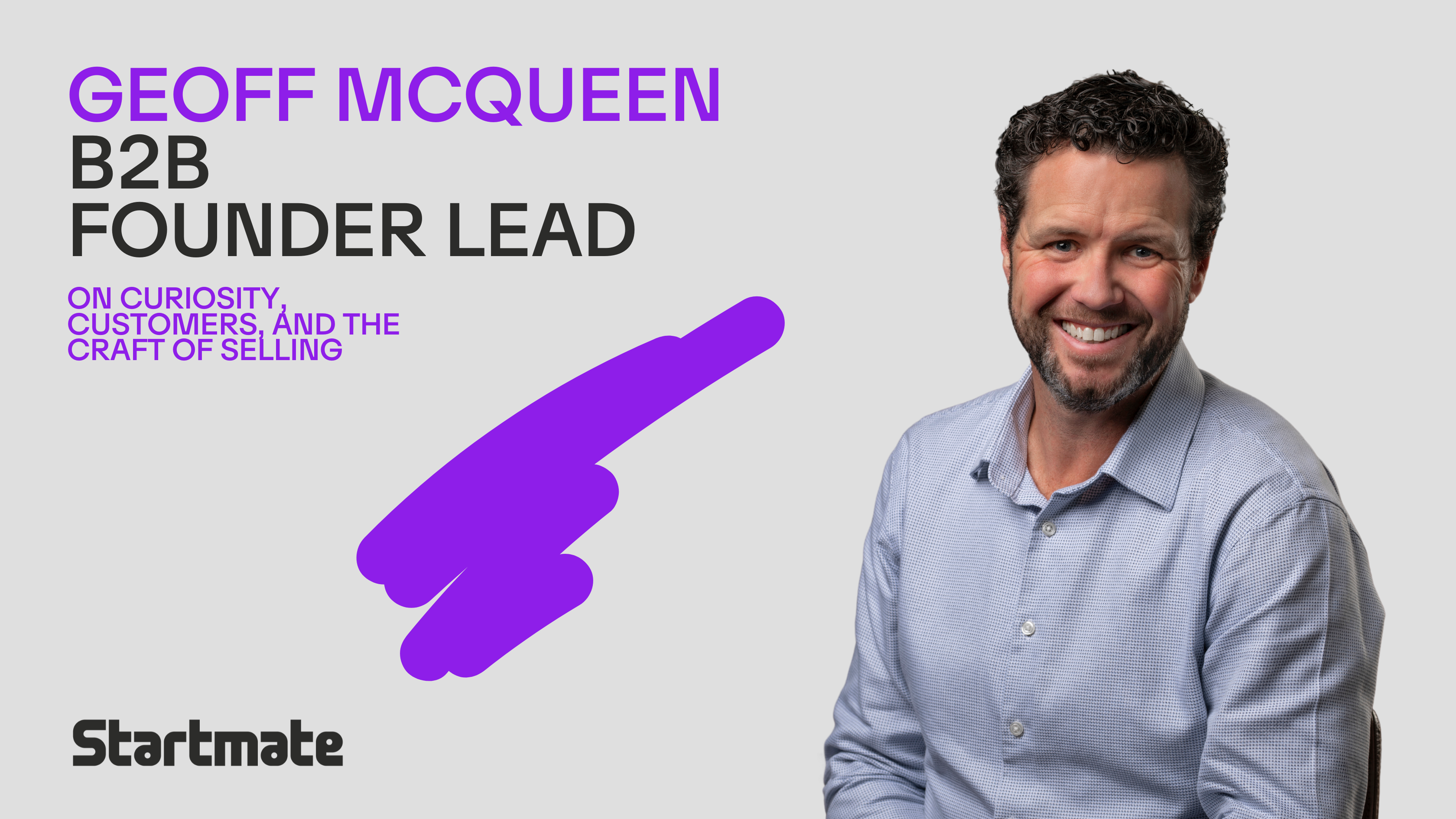Between climate change, a growing population, food security challenges and a cost-of-living crisis, efficiency has never been higher on the agenda for farmers.
Agtech startup Flux is here to drive that efficiency – and it's already making change on the ground (literally) with precision farming and weed-busting robots.
Flux’s robots are designed specifically to reduce the amount of pesticides used on farms.
The startup’s high-precision sprayer uses computer vision software combined with robotics. Towed behind a tractor, it can identify weeds and spray them with pesticide, without having to coat the whole field.
The Flux team is also working on tech that will detect weeds and manually rip them out of the ground, meaning no need for pesticides at all.
To say founder Jordy Kitschke is familiar with the farming community is an understatement. While we’re chatting, he’s parked on a hilltop in rural South Australia, the only point he could get a reliable signal on his phone.
He turns his camera around to pan the agricultural landscape, pointing out the sheep and grain farm where he grew up on the horizon.
Clearly Jordy is well and truly in tune with the farming world and the needs of those within it.
When it comes to tech, he’s self-taught. But having previously co-founded MEQ, a startup building data-based tools to analyse the quality of red meat, he’s also seemingly brimming with deep tech solutions to meet those needs.
Pesticide pains
There are three main drivers of farm profitability, Jordy tells me: input costs, yield and pricing.
Pesticides are expensive, so they have a significant impact on input costs. They often also affect yield, and sometimes pricing too.
So production systems that rely less on pesticides would improve margins for farmers, while having the added bonus of being kinder to the environment.
But Jordy was well aware that creating both the physical robots and the software to run them – in a way that was scalable – would not be easy.
“Agriculture is a really diverse industry,” he says.
“It's full of countless different commodities and production systems and geographies and climates and soil types.
“There are just so many variables that you have to try and engineer for, without having a million different options.”
Flux is also designing and building the full, end-to-end solutions in house – working on advanced tech in various different disciplines. That can make things trickier, Jordy says.
“We're at the cutting edge of software and mechanical design and electronics.
“Then all of those things have to integrate with each other.”
Field testing
Since day one, to help drive development in the right direction, Flux has run a rapid iteration “farmer-in-the-loop feedback system”, Jordy says.
That essentially means building a prototype of the hardware, and taking everything out to test on a real-life farm, usually with the farmer helping out. The team then reviews and makes improvements, again and again and again.
Jordy and the team also spoke to as many farmers as possible before starting development, to truly understand the pain points before spending too much time on product and engineering.
“One of the most important resources we have access to is the brains of farmers around the country,” Jordy says.
“Every time we go to a farm, someone will suggest an interesting idea and often that ends up incorporated into the product.
“They’re as close to the problem and the user experience as you can get. The better we can incorporate those ideas into our products, the happier they’re going to be.”
“Proving assumptions on the paddock, not on the whiteboard”
Today, Flux’s first product is on the market. There are purchase orders signed and the manufacturing process has begun.
Until joining the Startmate Summer 23 cohort, the startup was bootstrapped, meaning Jordy took his deep-tech, hardware product from idea to market in less than 24 months without any external capital to speak of.
That’s somewhat unusual, he concedes. But he’s proud to have shown it’s possible.
“The reality is we spent a lot of time on farms,” he says.
“There were times I was living in a swag on a farm, just to get as close as I could to the problem.”
The earliest robots were held together with zip ties, duct tape and bailing twine, he recalls. It was the very definition of scrappy, but it allowed Jordy and the team to iterate at super speed, and on a budget.
“If you move in faster and take smaller bites of the apple I think it increases your probability of achieving what you want to achieve.”
He’s also an advocate for “proving assumptions on the paddock, not on the whiteboard”.
In the time it takes to send a bunch of emails, have a meeting and talk through a hypothesis, you can usually just pack your toolbox, head to a field and measure in the real world.
“You would figure it out, and you would have a much more accurate piece of data.”
Farms in flux, and Flux on farms
The agtech space is a buzzy one, especially in Australia. Jordy says we’re in the midst of an agricultural revolution – and he believes it’s an era of precision.
Over the past 70 years or so, efficiency has been driven by machines that got bigger and bigger and faster and faster. For a time, that was the best option for farmers.
“But it’s reduced the granularity at which you can manage a paddock,” Jordy explains.
“When you have the ability to do a lot of sensing and computation and actuation at a small scale, you can manage landscapes much more efficiently.”
Flux has a pipeline of products expected to be rolled out over the next few years, including solutions for broadacre crops, orchards and vines.
In the long term, Jordy wants every farmer to have the option to use a Flux robot as a key productivity tool, helping solve whatever challenges they may face into the future.
Those challenges are not limited to Aussie farmers, and neither is Jordy’s ambition.
The next decade will only bring more pressure for farmers all over the world, due to market pressure, regulation and even chemical resistance, he says.
“Farmers are constantly under pressure to produce more with less, so hopefully our products can help farmers to get more out of each hectare, labour unit, and crop input.
“There's no reason Flux can't have an impact on a significant portion of the world's food production, in the same way that tractors have over the last 100-odd years.”







.png)

